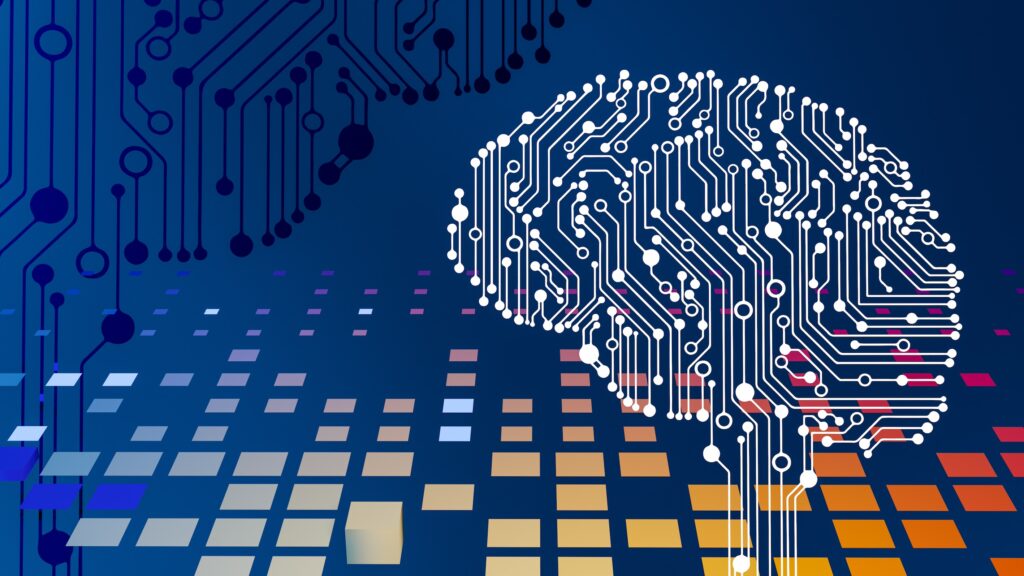By Susanna Ray, Microsoft Source writer
The term “AI” has been used in computer science since the 1950s, but most people outside the industry
didn’t start talking about it until the end of 2022. That’s because recent advances in machine learning
led to big breakthroughs that are beginning to have a profound impact on nearly every aspect of our
lives. We’re here to help break down some of the buzzwords so you can better understand AI terms and
be part of the global conversation.

- Artificial intelligence
Artificial intelligence is basically a super-smart computer system that can imitate humans in some ways,
like comprehending what people say, making decisions, translating between languages, analyzing if
something is negative or positive, and even learning from experience. It’s artificial in that its intellect
was created by humans using technology. Sometimes people say AI systems have digital brains, but
they’re not physical machines or robots — they’re programs that run on computers. They work by
putting a vast collection of data through algorithms, which are sets of instructions, to create models that
can automate tasks that typically require human intelligence and time. Sometimes people specifically
engage with an AI system — like asking Bing Chat for help with something — but more often the AI is
happening in the background all around us, suggesting words as we type, recommending songs in
playlists and providing more relevant information based on our preferences. - Machine learning
If artificial intelligence is the goal, machine learning is how we get there. It’s a field of computer science,
under the umbrella of AI, where people teach a computer system how to do something by training it to
identify patterns and make predictions based on them. Data is run through algorithms over and over,
with different input and feedback each time to help the system learn and improve during the training
process — like practicing piano scales 10 million times in order to sight-read music going forward. It’s
especially helpful with problems that would otherwise be difficult or impossible to solve using
traditional programming techniques, such as recognizing images and translating languages. It takes a
huge amount of data, and that’s something we’ve only been able to harness in recent years as more
information has been digitized and as computer hardware has become faster, smaller, more powerful
and better able to process all that information. That’s why large language models that use machine
learning — such as Bing Chat and ChatGPT — have suddenly arrived on the scene. - Large language models
Large language models, or LLMs, use machine learning techniques to help them process language so
they can mimic the way humans communicate. They’re based on neural networks, or NNs, which are
computing systems inspired by the human brain — sort of like a bunch of nodes and connections that
simulate neurons and synapses. They are trained on a massive amount of text to learn patterns and
relationships in language that help them use human words. Their problem-solving capabilities can be
used to translate languages, answer questions in the form of a chatbot, summarize text and even write
stories, poems and computer code. They don’t have thoughts or feelings, but sometimes they sound like
they do, because they’ve learned patterns that help them respond the way a human might. They’re
often fine-tuned by developers using a process called reinforcement learning from human feedback
(RLHF) to help them sound more conversational.
- Generative AI
Generative AI leverages the power of large language models to make new things, not just regurgitate or
provide information about existing things. It learns patterns and structures and then generates
something that’s similar but new. It can make things like pictures, music, text, videos and code. It can be
used to create art, write stories, design products and even help doctors with administrative tasks. But it
can also be used by bad actors to create fake news or pictures that look like photographs but aren’t real,
so tech companies are working on ways to clearly identify AI-generated content. - Hallucinations
Generative AI systems can create stories, poems and songs, but sometimes we want results to be based
in truth. Since these systems can’t tell the difference between what’s real and fake, they can give
inaccurate responses that developers refer to as hallucinations or confabulations — much like if
someone saw what looked like the outlines of a face on the moon and began saying there was an actual
man in the moon. Developers try to resolve these issues through “grounding,” which is when they
provide an AI system with additional information from a trusted source to improve accuracy about a
specific topic. Sometimes a system’s predictions are wrong, too, if a model doesn’t have current l
doesn’t have current information after it’s trained. - Responsible AI
Responsible AI guides people as they try to design systems that are safe and fair — at every level,
including the machine learning model, the software, the user interface and the rules and restrictions put
in place to access an application. It’s a crucial element because these systems are often tasked with
helping make important decisions about people, such as in education and healthcare, but since they’re
created by humans and trained on data from an imperfect world, they can reflect any inherent biases. A
big part of responsible AI involves understanding the data that was used to train the systems and finding
ways to mitigate any shortcomings to help better reflect society at large, not just certain groups of
people. - Multimodal models
A multimodal model can work with different types, or modes, of data simultaneously. It can look at
pictures, listen to sounds and read words. It’s the ultimate multitasker! It can combine all of this
information to do things like answer questions about images. - Prompts
A prompt is an instruction entered into a system in language, images or code that tells the AI what task
to perform. Engineers — and really all of us who interact with AI systems — must carefully design
prompts to get the desired outcome from the large language models. It’s like placing your order at a deli
counter: You don’t just ask for a sandwich, but you specify which bread you want and the type and
amounts of condiments, vegetables, cheese and meat to get a lunch that you’ll find delicious and
nutritious. - Copilots
A copilot is like a personal assistant that works alongside you in all sorts of digital applications, helping
with things like writing, coding, summarizing and searching. It can also help you make decisions and
understand lots of data. The recent development of large language models made copilots possible,
allowing them to comprehend natural human language and provide answers, create content or take
action as you work within different computer programs. Copilots are built with Responsible AI guardrails
to make sure they’re safe and secure and are used in a good way. Just like a copilot in an airplane, it’s
not in charge — you are — but it’s a tool that can help you be more productive and efficient. - Plugins
Plugins are like relief pitchers in baseball — they step in to fill specific needs that might pop up as the
game develops, such as putting in a left-handed pitcher when a left-handed hitter steps up to the plate
for a crucial at-bat. Plugins enable AI applications to do more things without having to modify the
underlying model. They are what allow copilots to interact with other software and services, for
example. They can help AI systems access new information, do complicated math or talk to other
programs. They make AI systems more powerful by connecting them to the rest of the digital world.

